

Cheyenne

Wyoming State Capitol
The Wyoming State Capitol is the state capitol and seat of government of the U.S. state of Wyoming. Built between 1886 and 1890, the capitol is located in Cheyenne and contains the chambers of the Wyoming State Legislature and well as the office of the Governor of Wyoming. It was designated a U.S. National Historic Landmark during 1987.
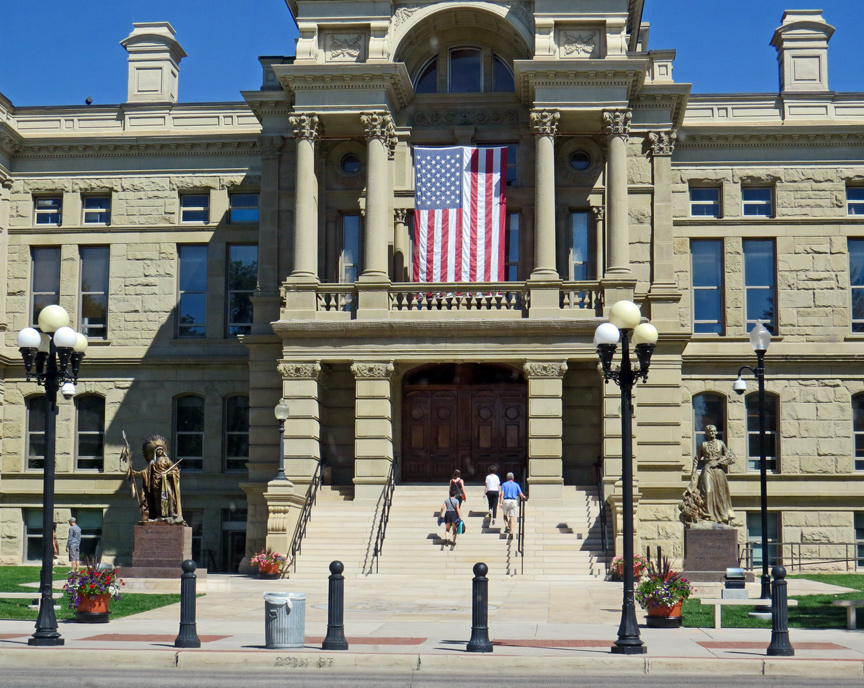
The construction of the capitol began prior to Wyoming gaining statehood. Born
in 1867 in the path of the transcontinental railroad, the Union Pacific crews
arrived as they laid the tracks westward. Cheyenne soon laid claim to a higher
status than older Wyoming settlements such as those at Fort Laramie, Fort
Bridger, and the mining town of South Pass City, changing Cheyenne from a
village to a city in a matter of months. The seat of the new Territorial
government was established in Cheyenne in 1869.
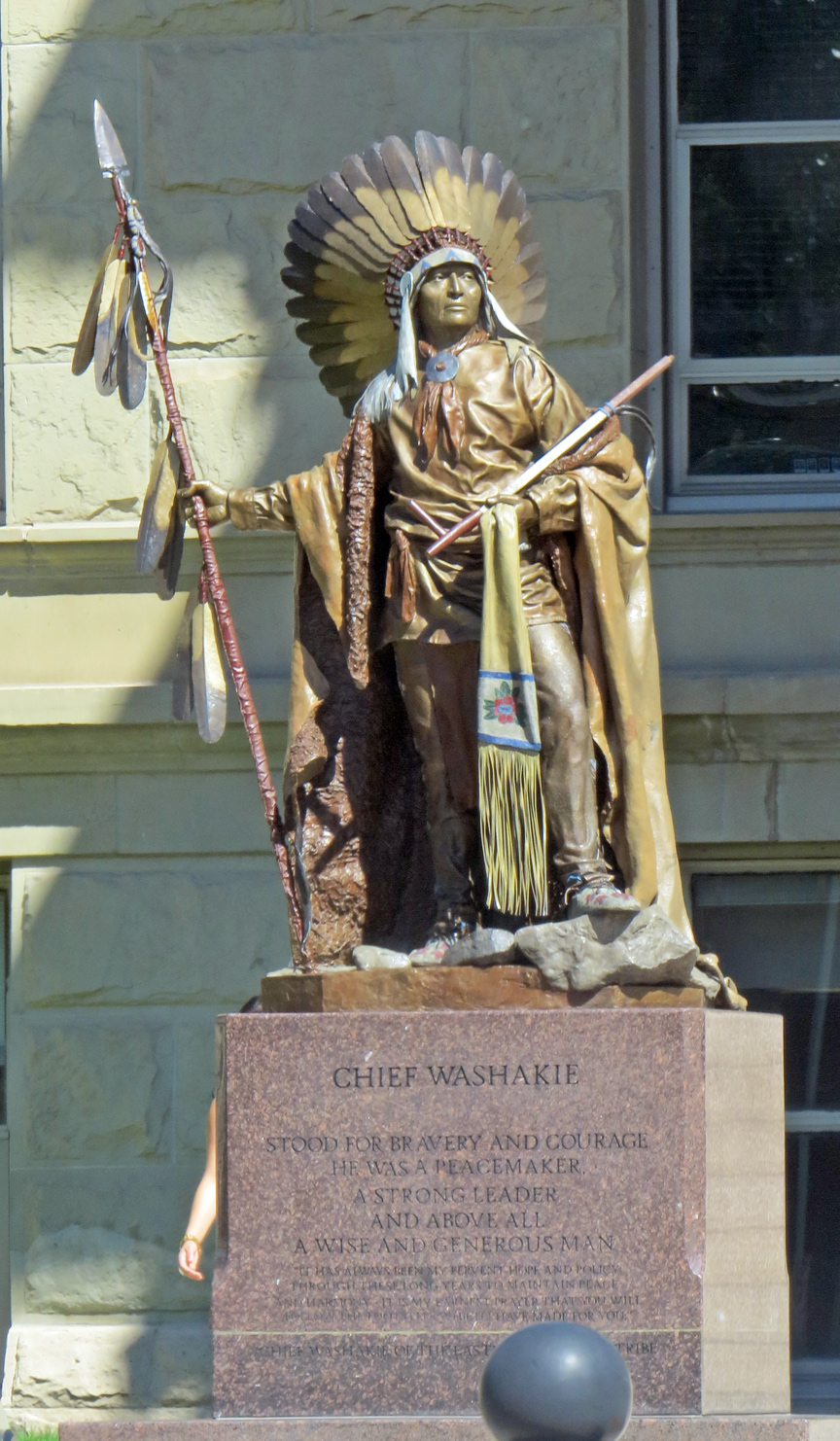
Chief Washakie
1886, the Ninth Territorial Legislative Assembly authorized construction of the State Capitol. A five member commission, appointed by Governor Francis E. Warren, was charged with the selection and purchase of the site, selection of an architect and accepting the lowest bids for construction of the building. The commission chose the firm of David W. Gibbs & Company, Architects, to draw plans and specifications. These were accepted in July 1886 and the contraced to the lowest bidder, Adam Feick & Brothers, who broke ground on September 9, 1886.
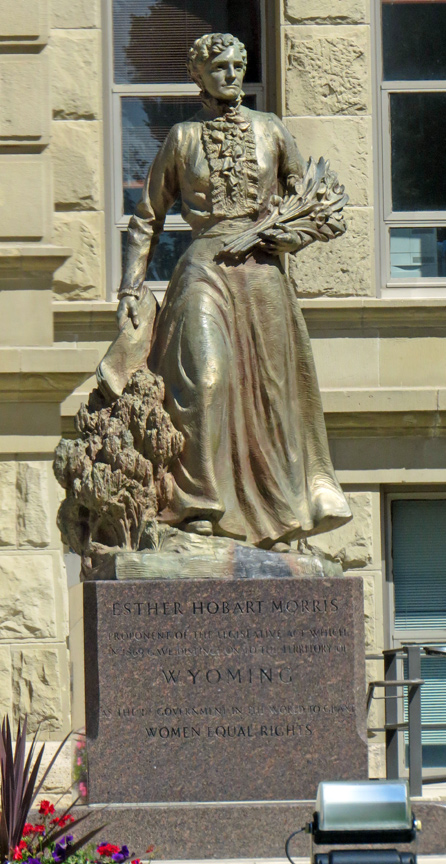
Easter Hobart Morris
The Tenth Territorial Legislative Assembly convened in the unfinished building. The two small wings on the east and west were completed in 1890. Crowded conditions persisted with the growth of the state and in 1915 the Thirteenth legislature approved the construction of the House and Senate Chambers, which were completed in March 1917.
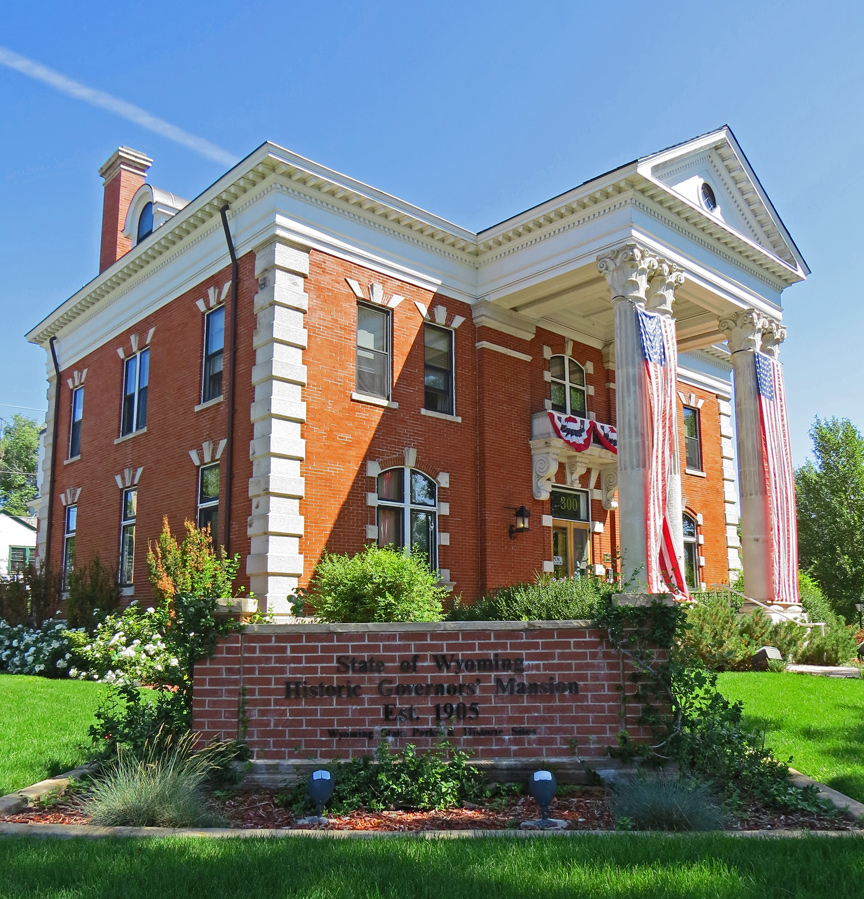
Historic Governors' Mansion

The 42nd Legislature in 1974 appropriated funds for the first phase of
renovation of the capitol and the project was completed in 1980. Work included
stripping and staining all woodwork, painting walls in the original designs and
colors, replacing wooden floor beams with steel, concrete and modernizing the
wiring, heating, plumbing and air conditioning.
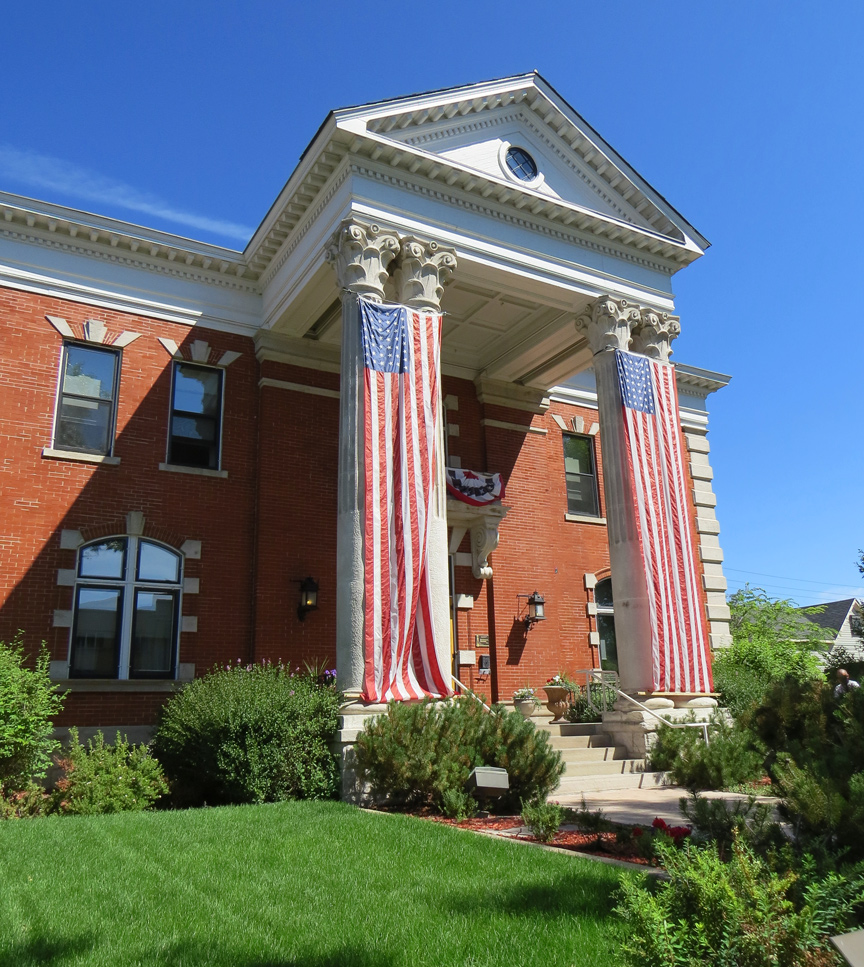
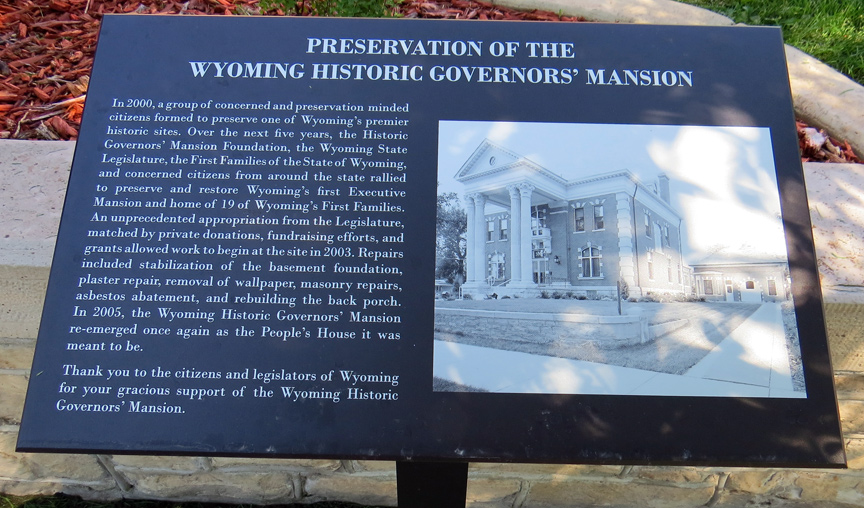
The building was designated a National Historic Landmark during 1987.
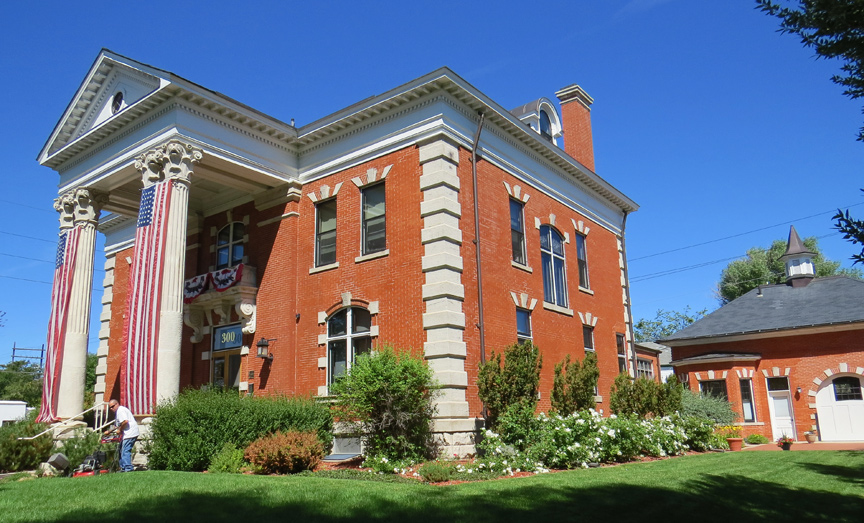
The facade as it was extended during 1915 with the House and Senate chambers in
the end pavilions
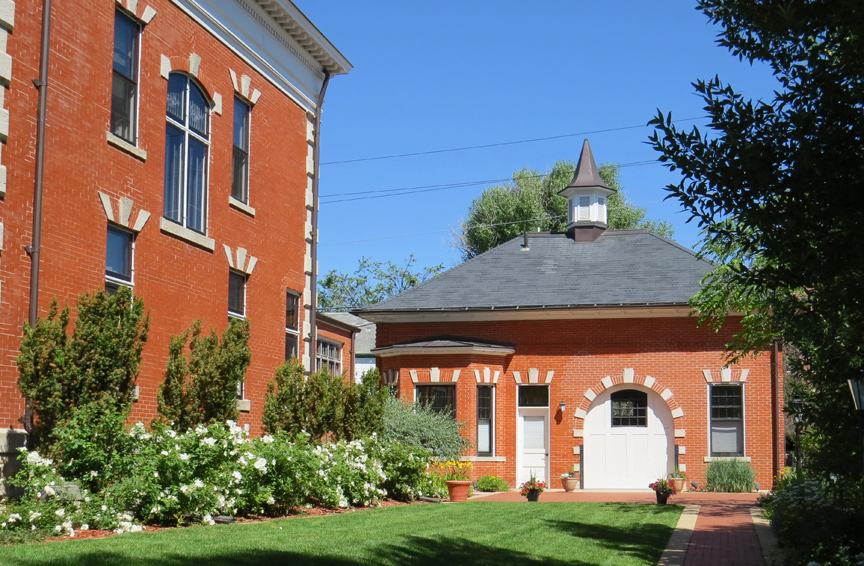
The capitol is located north of downtown Cheyenne. The exterior approach to the front steps of the capitol features the State Seal in granite as well as two statues. Esther Hobart Morris, who had a significant role in gaining women's suffrage in the Wyoming Territory. The statue was sculpted by Avard Fairbanks. The Act to grant women the right to vote was passed by the First Territorial Assembly and signed by Governor John Allen Campbell on December 10, 1869. Wyoming was thus first government in the world to grant women the right to vote. Morris was also appointed as the first female Justice of the Peace in the territory during 1870. Chief Washakie of the Shoshone tribe. The statue was sculpted by Dave McGary. Chief Washakie earned a reputation that lives on to this day-fierce warrior, skilled politician and diplomat, great leader of the Shoshone people, friend to white men. Washakie granted right-of-way through Shoshone land in western Wyoming to the Union Pacific Railroad, aiding the completion of the transcontinental railroad. The famed leader and warrior died at the age of 102 in 1900. He was buried with full military honors at Fort Washakie. A replica of Esther Hobart Morris and Chief Washakie are in the National Statuary Hall in the U.S. Capitol.
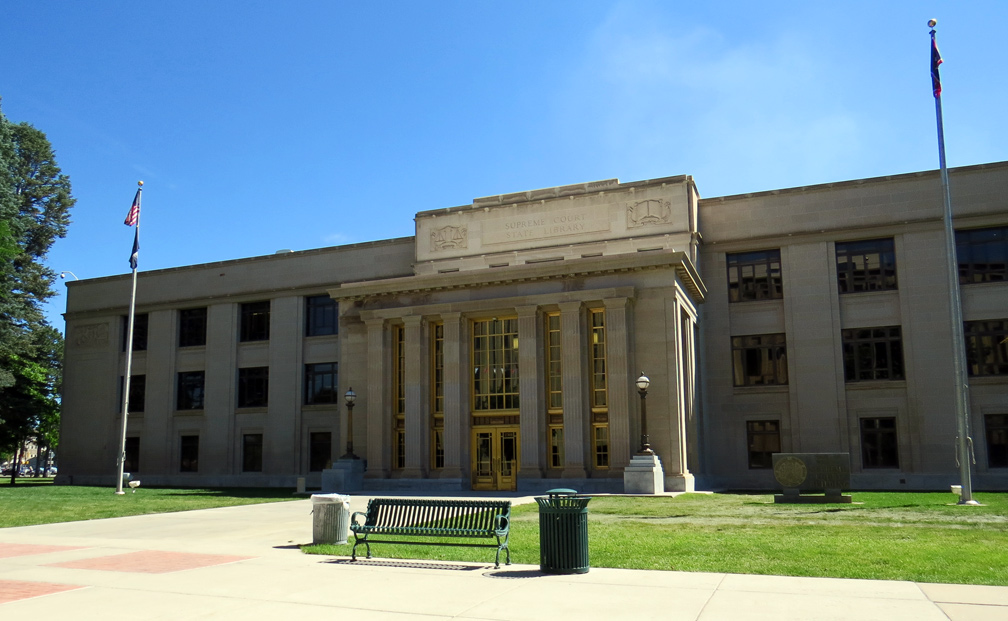
Supreme Court
The architecture of the building is renaissance revival, reminiscent of the National Capitol Building in Washington, D.C. The sandstone for the building came from a quarry in Rawlins, Wyoming and Fort Collins, Colorado. The building's cornerstone was laid on May 18, 1887, with maps, a roster of territorial officers and other papers inside. During the Centennial of the Capitol in 1987; the cornerstone was removed, these documents were replaced and the cornerstone reset.
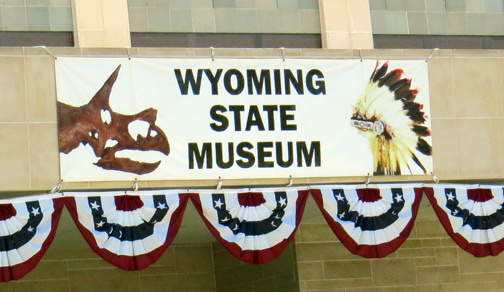
While standing in the center of the rotunda, looking up at the base of the dome
directly overhead you see the stained glass, imported from England. From
underneath it sparkles with blue, purple, and green hues, but the upper side
glistens with red, yellow, and orange. The Dome of the capitol is copper and it
tarnished so badly in 1900 they began using gold leaf on the exterior of the
dome. The 24-carat gold leaf dome is visible from all roads entering the city.
It has been gilded five times, the first in 1900 and the last in 2010. A highly
skilled person is needed because, if the gold leaf is touched by fingers in
handling, it will disintegrate. The peak of the dome is 146 feet high, and the
base is 50 feet in diameter.

The first floor rotunda is striking, with the checkerboard marble floors,
columns, and impressive staircase made of cherry wood brought out from Ohio.
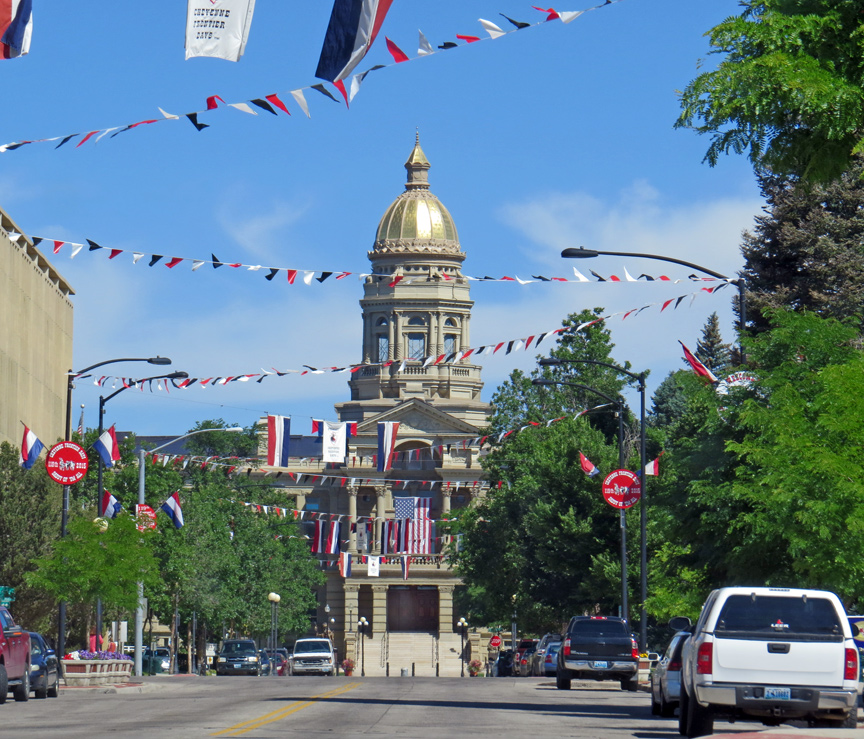
Four of Wyoming's five elected officials including the Governor, Secretary of
State, Auditor and Treasurer have their offices in the Capitol on the first
floor. The Superintendent of Public Instruction is located a block south in the
Hathaway Building.
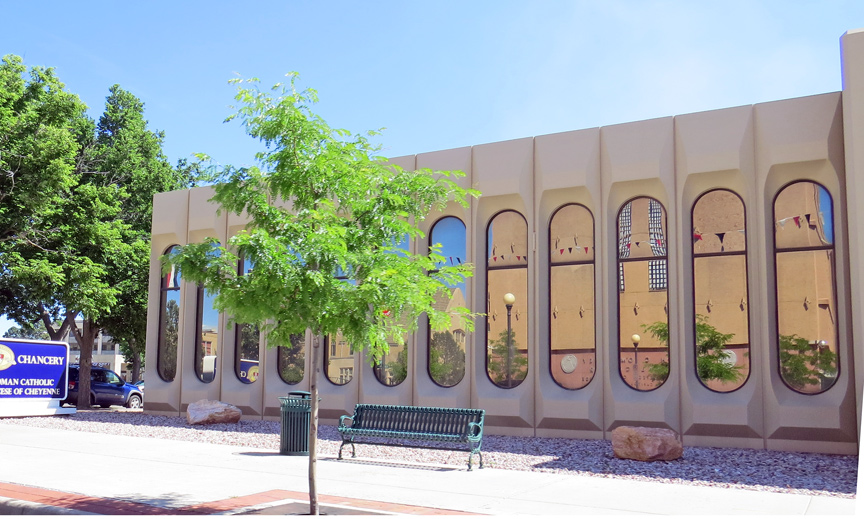
The west wing of the first floor contain several large taxidermy specimens,
including two mounted Golden Eagles and a mounted Bison which was raised with
the state herd at Hot Springs State Park near Thermopolis. The bison weighed
approximately 3,000. lb (1350 kg).
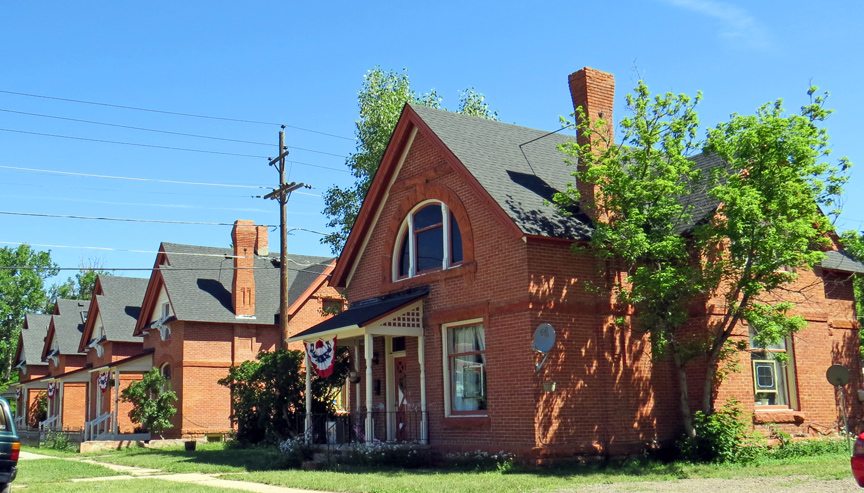
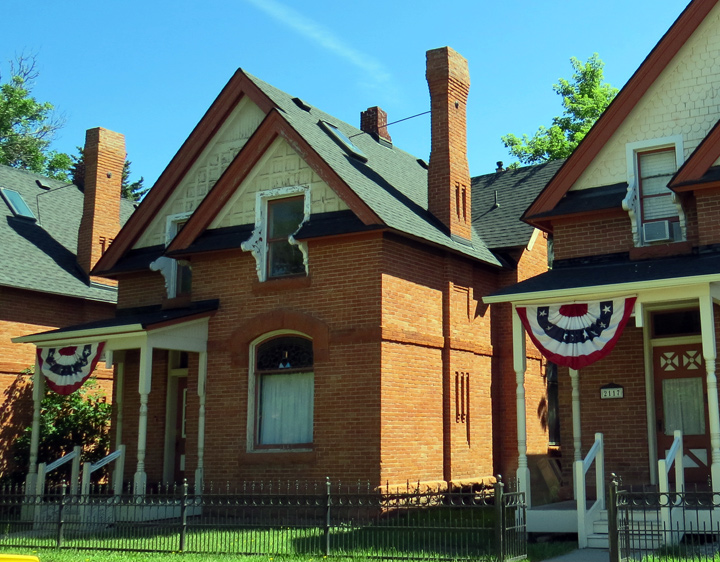
The Senate chamber is the west wing of the second floor building; the House
chamber is in the east wing of the second floor. Each chamber contains four
large murals by Allen Tupper True, who painted them during August 1917 for a
cost of $500 each. The murals depicting various aspects of the culture, history,
and industry of Wyoming. The murals in the Senate chamber are entitled "Indian
Chief Cheyenne", "Frontier Cavalry Officer", "Pony Express Rider", and "Railroad
Builders/Surveyors". The House murals are entitled "Cattlemen", "Trappers",
"Homesteaders", and "Stagecoach". The ceilings of both chambers are inlaid with
stained glass from the Midland Glass and Paint Company of Omaha, NE, with the
Wyoming State Seal displayed in the center. Both chambers are accessible to
visitors by balconies on the third floor. The House and Senate chambers also
include four oil paintings by William Gollings. Two in each chamber. The wood in
both chambers is oak.
Text from Wikipedia
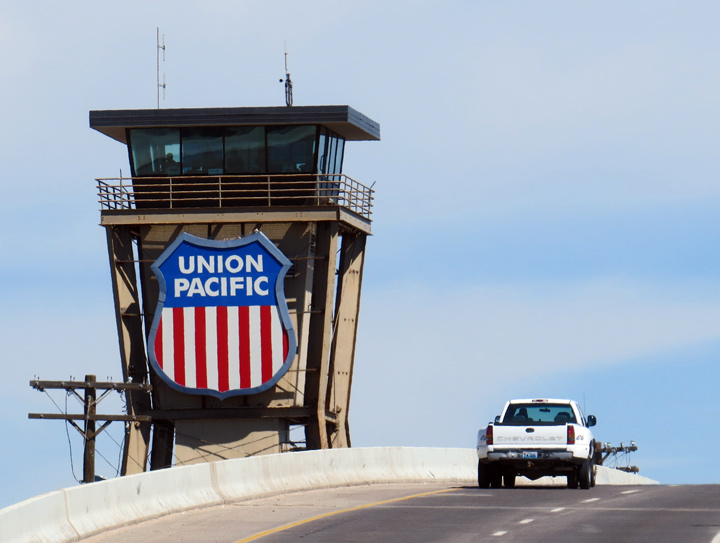
entering Cheyenne over the Union Pacific tracks
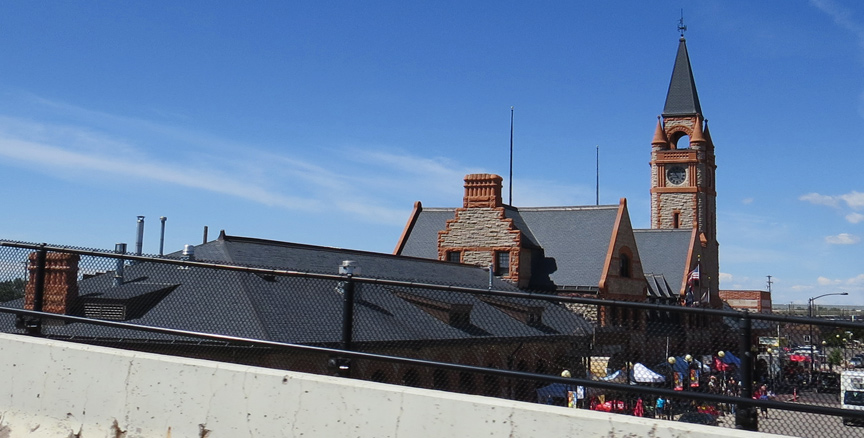
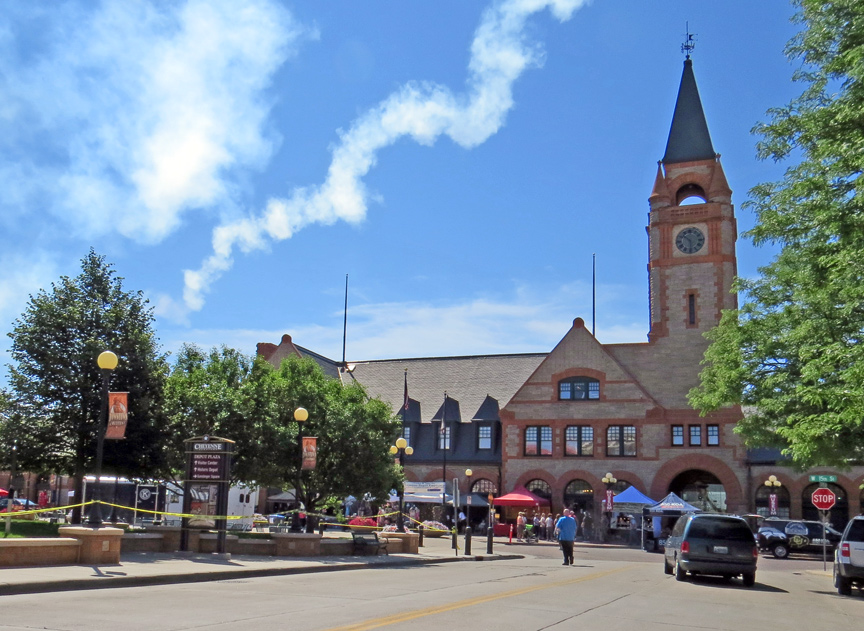
Cheyenne Depot
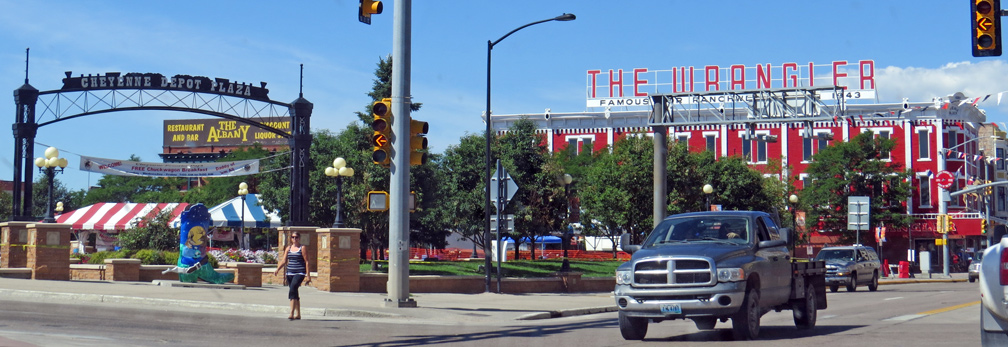

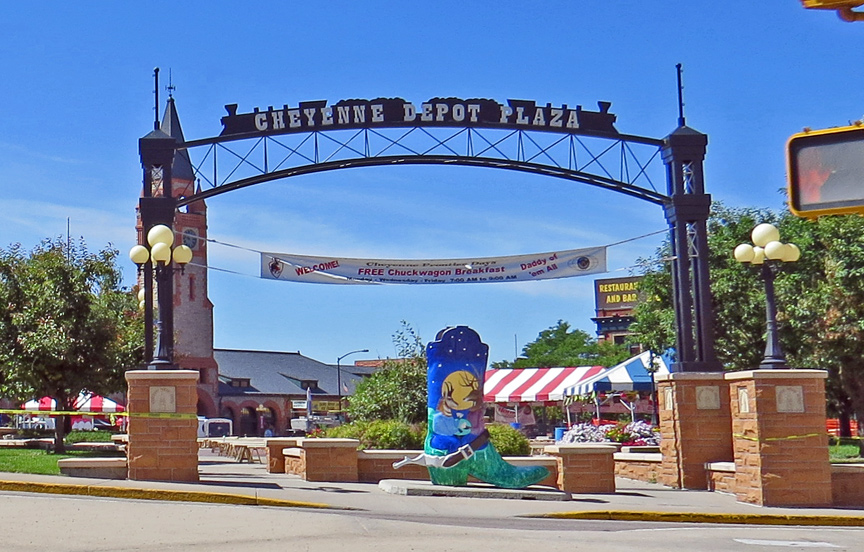
Depot Plaza
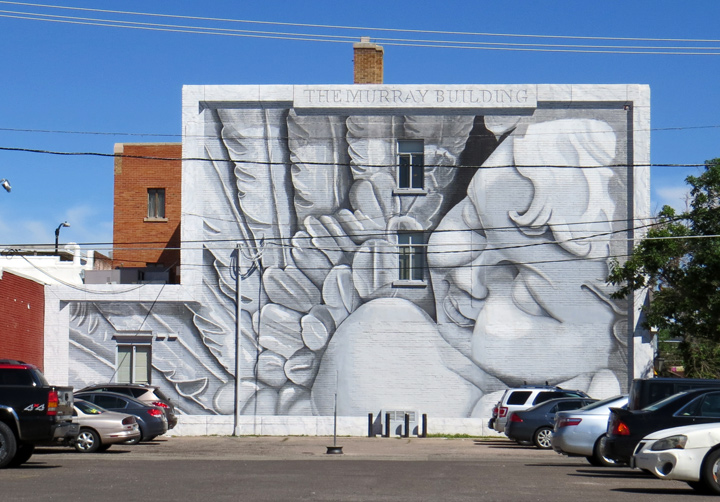

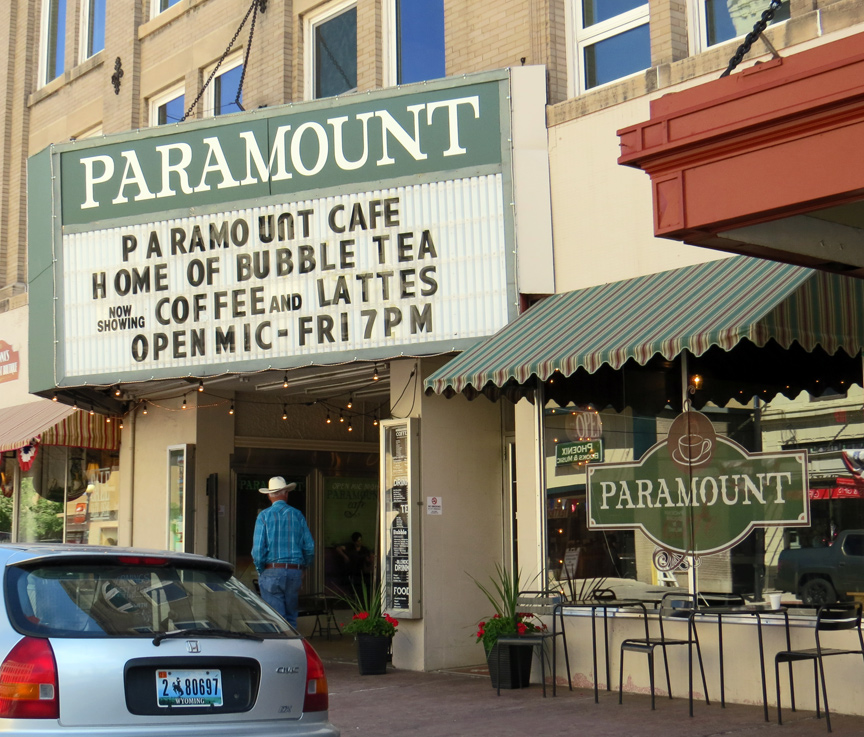
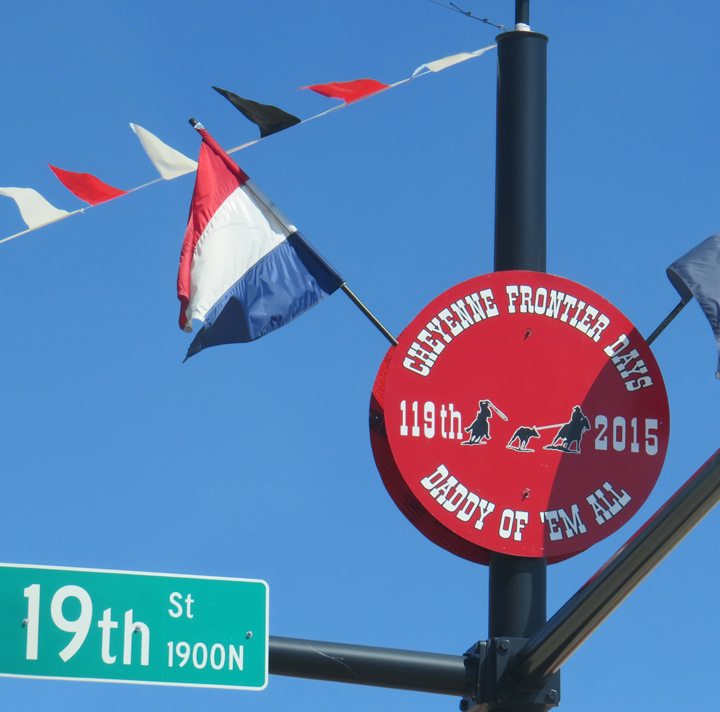
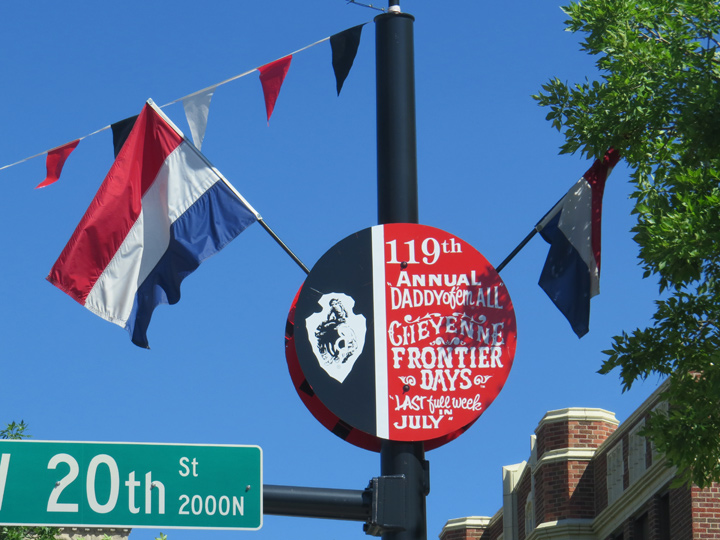
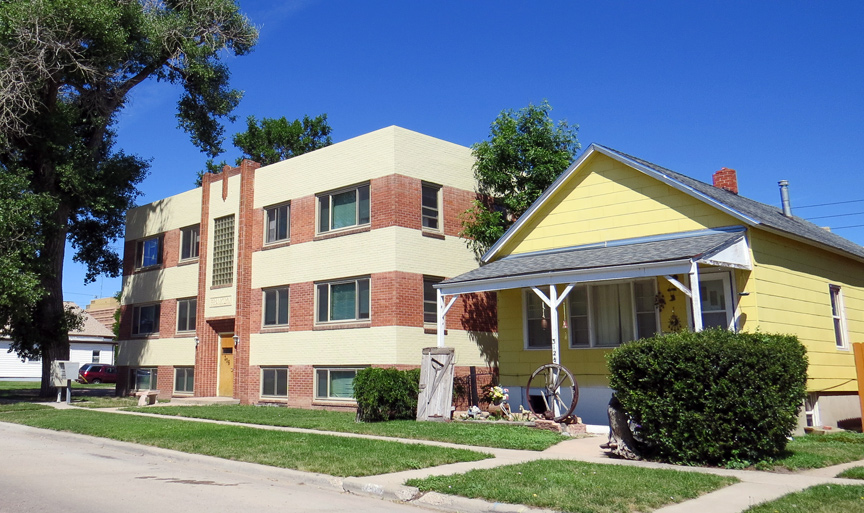
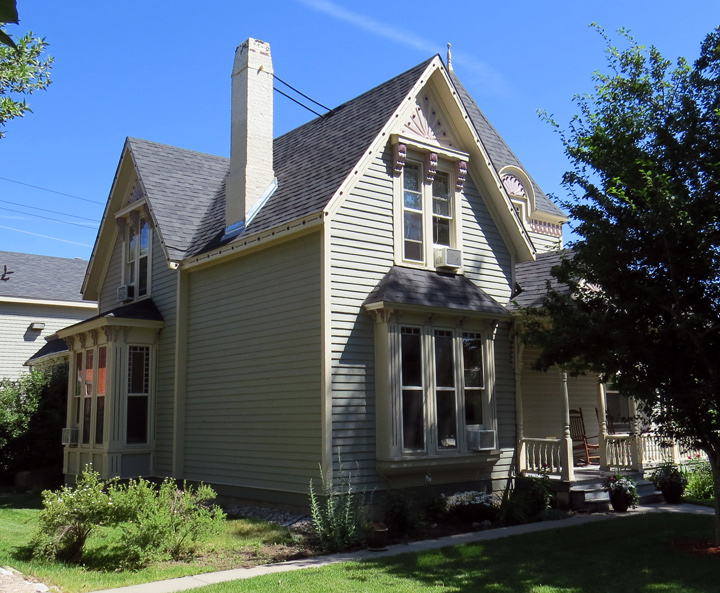
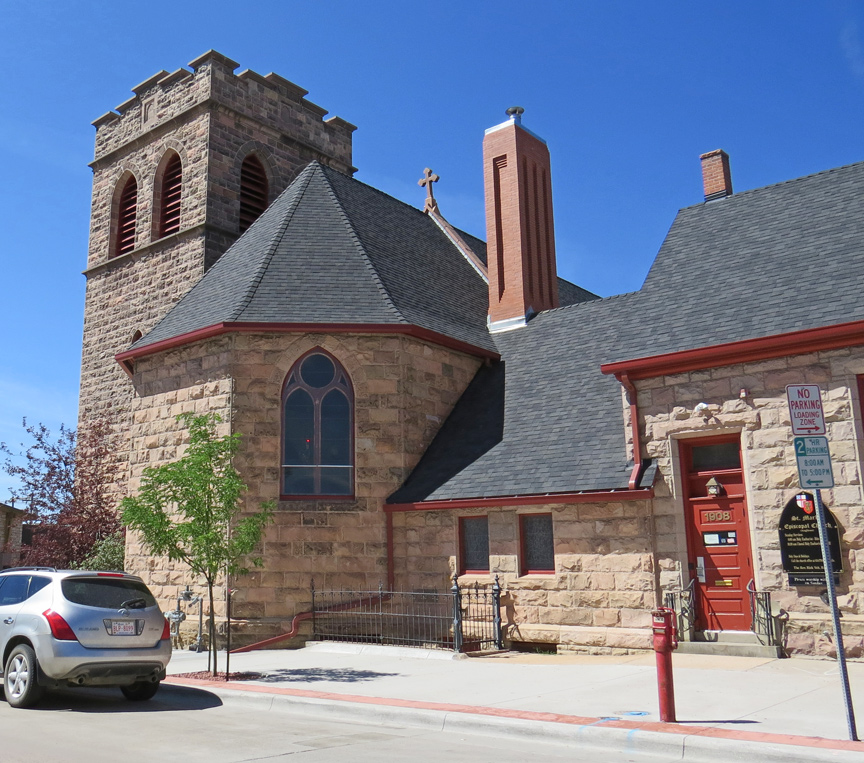
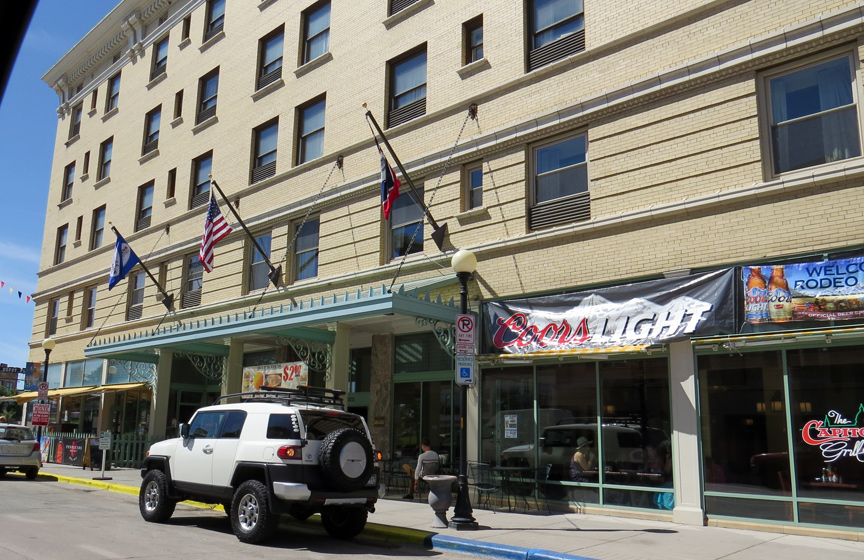
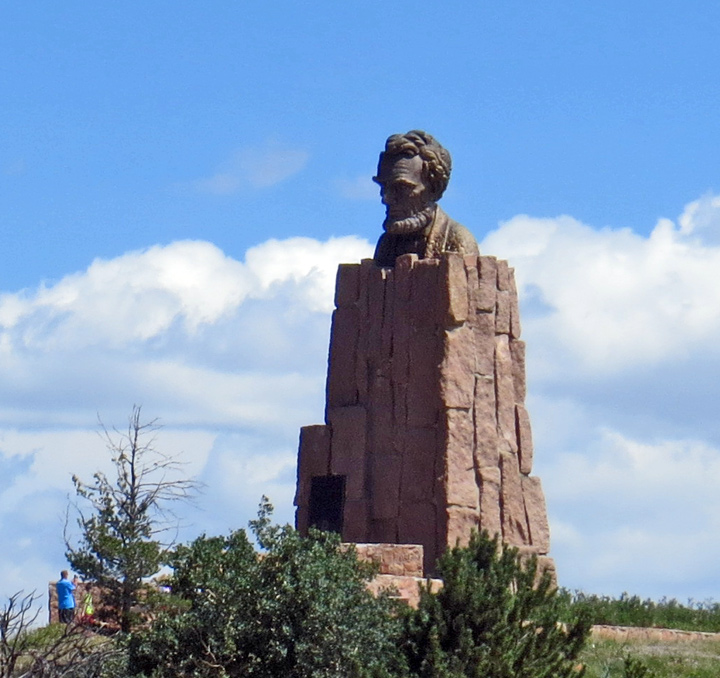
Lincoln

Wyoming countryside